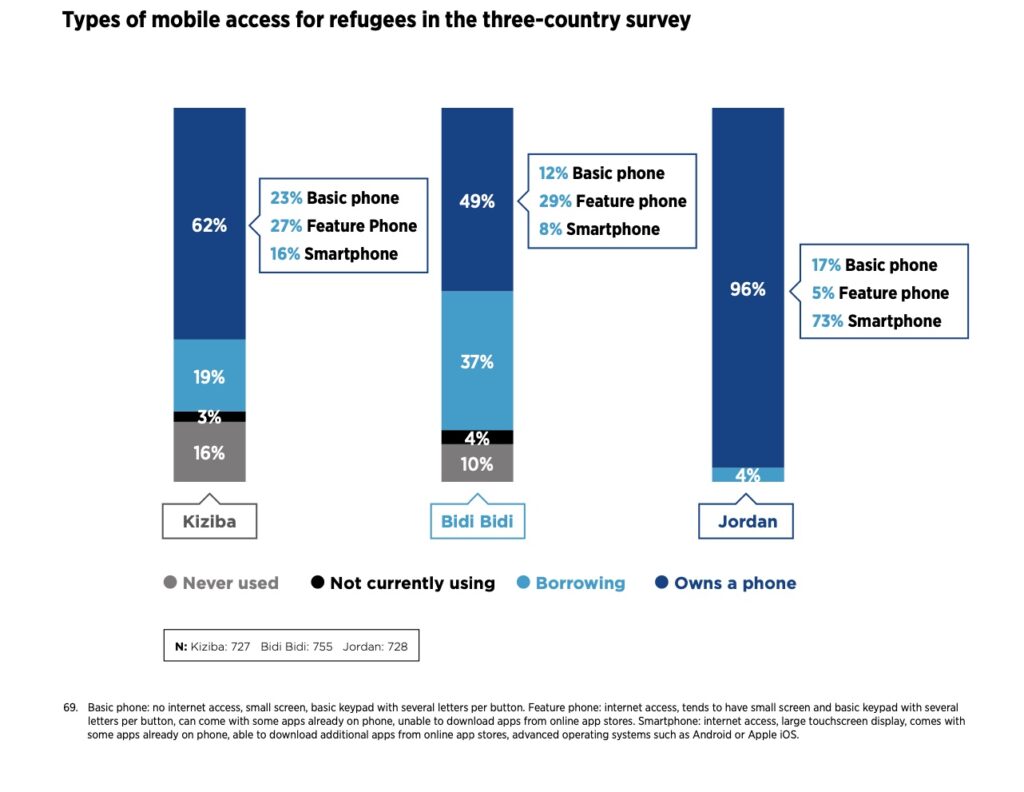Digital tools and social networks are becoming more and more crucial in determining how people respond to certain life events. Refugees use electronic devices, such as phones, laptops, and tablets to browse the internet, find reliable information sources, and communicate with family, friends, and also other refugees mostly to seek support and direction from societal organizations that assist asylum seekers. Digital tools can also increase access to educational platforms, health services, and job opportunities.
Based on the research by The GSMA, depending on their environment, refugees get mobile services in different ways, such as by sharing or borrowing phones and using different SIM cards. Most of them use their own phone and their own SIM card, for those who do not have them, borrowing is an important part of connecting with other people.

The most popular mobile service is calling. SMS is the second-most popular cellphone service. Qualitative research across all contexts indicates that the cost of using SMS messaging is one of the biggest barriers for refugees. The research data also indicates that refugees would like to use mobile internet more than they are currently able to.
“I use WhatsApp because it is easier. I have a relative who went to America. It is cheaper to call on WhatsApp and it is easy [to arrange] when they want to send me money.”
(Female, Refugee, Rwanda)
Because of that, online communication is thought to be more affordable and cost-effective than calling, particularly when connecting with individuals abroad. For refugees who are cut off from friends and family, communication (voice and text) on social media is seen to be especially crucial for creating a sense of connectedness and community. Entertainment is the third most frequent usage case, along with monitoring news and information.
Refugees can stay in touch with their family and the outside world thanks to their mobile phones. Their frequent use of phones for basic communication shows the importance of mobile for satisfying a social needs.
Bibliography:
1. https://www.unhcr.org/5fc126394.pdf
2. https://so-close.eu/blog/tools/refugees-and-digital-tools-opportunities-and-challenges/
3. https://journal-njmr.org/articles/10.33134/njmr.250/
4. https://www.unhcr.org/innovation/wp-content/uploads/2020/04/Space-and-imagination-rethinking-refugees’-digital-access_WEB042020.pdf